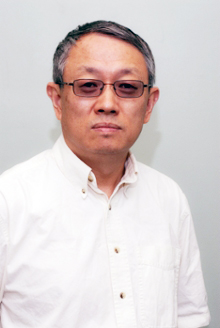Computational chemistry researchers complete millennia of research in four years
UNM Distinguished Professor of Chemistry and Chemical Biology Hua Guo and his research team have logged an impressive 7,257 compute years on Center for Advanced Research Computing (CARC) systems in the past four years. In other words, the amount of work Guo's team completed in four years using high performance computing systems would have taken 7,257 years to do on a single laptop computer. Guo’s work is in computational chemistry, which allows researchers to simulate chemical reactions on computers rather than conducting real-life experiments that can be dangerous, costly and time-consuming.

Computational chemistry often involves solving difficult differential equations and is thus a well-established field in high-performance computing. Electronic structural software helps researchers study how atoms interact with each other. Guo and his research group use existing software like Gaussian and VASP as well as writing their own code to understand what is happening to electrons during chemical reactions. Computational methods allow Guo and his research group to study chemical reactivity and use that information in many useful ways, including to improve chemical processes to make them more efficient and environmentally friendly, and to create better materials. “We always ask the question why…if we understand why, we can proceed to do how,” Guo explained.
The study of chemical reactivity has far-reaching implications beyond the field of chemistry, and many organizations are keen to work with researchers capable of this work. Guo’s research group is a world leader in this field because of their ability to use computational methods to understand chemical reactions. “By scaling up computations to hundreds of CPUs, [Guo] has been able to unlock solutions to problems that would have been impossible to solve on a traditional computer. This demonstrates that supercomputing is an instrument as revolutionary, and as essential, to modern science as the microscope was to biology or the telescope to astronomy,” explains CARC Research Assistant Professor Matthew Fricke.
In one project funded by the National Science Foundation, Guo is studying surface reactions related to catalysis. Catalysis is a process in which the rate of a chemical reaction is enhanced by a catalyst. For example, ammonia is a chemical commonly used as a fertilizer that is manufactured by creating a reaction between nitrogen and hydrogen, which do not normally react without a catalyst. Understanding the underlying molecular behavior of the chemical reaction in the manufacturing process could lead to the development of more environmentally friendly ways of making this widely-used chemical.
In another project funded by NASA & the United States Air Force, Guo is exploring chemistry related to thermal protection systems (TPS) for spacecraft. Specifically, he is seeking to understand the chemical process happening during entry, when the spacecraft, traveling at a high rate of speed, passes back through the atmosphere of a planet (including Earth). During entry, an incredible amount of heat is generated, enough to disrupt communications for a period of time. TPS tiles made from carbon and other materials coat the surfaces of the spacecraft most affected by this extremely high heat. Guo’s research uses computational chemistry to understand the interaction between the carbon in the tiles and the other elements found in the atmosphere such as nitrogen and oxygen. By better understanding these reactions, the hope is that even better thermal protection systems can be developed and that they might be able to avoid the disruption to communications systems as spacecraft pass through the atmosphere as they prepare to land.
Guo is also working to understand the chemicals present in the atmosphere of Titan, one of Saturn’s moons, and the impact they might have on a spacecraft landing there. Spectroscopy allows astronomers on Earth to measure the interaction between electromagnetic fields and matter, and these measurements can be used to identify molecules present in the atmosphere of a planet or moon. Analysis of the atmosphere of Titan shows that its atmosphere is different from Earth’s atmosphere; Titan’s atmosphere is mostly nitrogen and methane, while Earth’s is mostly nitrogen and oxygen. NASA’s upcoming Dragonfly mission aims to search for signs of life on Titan; they plan to deliver a capsule containing a drone to the surface of Titan so that the moon can be explored by air. This capsule must safely pass through Titan’s atmosphere in order to land, so Guo’s work aims to keep the capsule safe by understanding the chemical reactions occurring during entry and assuring the materials used in the capsule’s thermal protection system will be able to withstand the heat.
Guo’s other work includes a wide range of computational chemistry projects from studying how molecules interact in ultra-cold temperatures to research about chemical reactivity in ultra-hot conditions, and even explaining the odd behavior of ozone molecules in Earth’s atmosphere. This range of work has implications spanning disciplines from environmental chemistry to quantum computing.
In 2021, Guo was elected as a Fellow of the American Association for the Advancement of Science (AAAS). He also serves on the CARC Internal Advisory Board, which makes recommendations about future directions and initiatives for the Center. Learn more about Guo’s research work and group here.
Photo of Hua Guo courtesy of UNM Department of Chemistry and Chemical Biology
